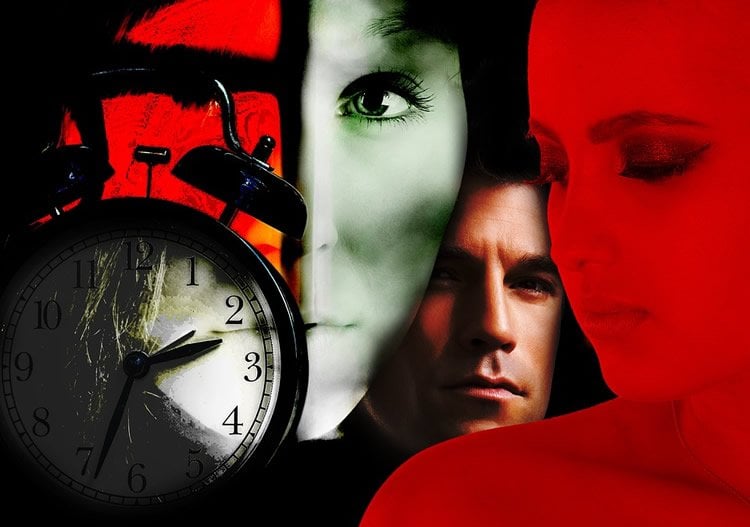Summary: Researchers proposes a new term to classify non-psychotic behavior that is associated with extreme beliefs and leads to acts of criminal violence.
Source: University of Missouri School of Medicine.
Researchers say new term offers more precise definition of non-psychotic behaviors.
In the aftermath of violent acts such as mass shootings, many people assume mental illness is the cause. After studying the 2011 case of Norwegian mass murderer Anders Breivik, University of Missouri School of Medicine researchers are suggesting a new forensic term to classify non-psychotic behavior that leads to criminal acts of violence.
“When these types of tragedies occur, we question the reason behind them,” said Tahir Rahman, M.D., an assistant professor of psychiatry at the MU School of Medicine and lead author of the study. “Sometimes people think that violent actions must be the byproduct of psychotic mental illness, but this is not always the case. Our study of the Breivik case was meant to explain how extreme beliefs can be mistaken for psychosis, and to suggest a new legal term that clearly defines this behavior.”
Breivik, a Norwegian terrorist, killed 77 people on July 22, 2011, in a car bombing in Oslo and a mass shooting at a youth camp on the island of Utøya in Norway. Claiming to be a “Knights Templar” and a “savior of Christianity,” Breivik stated that the purpose of the attacks was to save Europe from multiculturalism.
Two teams of court-appointed forensic psychiatrists later examined Breivik. The first psychiatric team diagnosed him with paranoid schizophrenia. However, after widespread criticism, a second team concluded that Breivik was not psychotic and diagnosed him with narcissistic personality disorder. Breivik was sentenced to 21 years in prison.
“Breivik believed that killing innocent people was justifiable, which seems irrational and psychotic,” said Rahman, who also conducts forensic psychiatric examinations but was not involved with the Breivik case. “However, some people without psychotic mental illness feel so strongly about their beliefs that they take extreme actions. Current clinical guides, such as the Diagnostic and Statistical Manual of Mental Disorders, offer vague descriptions of alternative reasons a person may commit such crimes. Our suggested term for criminally violent behavior when psychosis can be ruled out is ‘extreme overvalued belief.'”
Rahman defines “extreme overvalued belief” as a belief that is shared by others and often relished, amplified and defended by the accused. The individual has an intense emotional commitment to the belief and may act violently as a result of that belief. Although the individual may suffer from other forms of mental illness, the belief and the actions associated with it are not the result of insanity.

“In courts of law, there are not clearly defined, standard methods of diagnosing insanity for legal purposes,” Rahman said. “This new term will help forensic psychiatrists properly identify the motive for the defendant’s criminal behavior when sanity is questioned.”
Rahman said that more research on extreme overvalued beliefs is needed to understand how they develop. Identifying those at risk will give mental health professionals an opportunity to intervene before violent behavior occurs.
“Certain psychological factors may make people more vulnerable to developing dominating and amplified beliefs,” Rahman said. “However, amplification of beliefs about issues such as immigration, religion, abortion or politics also may occur through the internet, group dynamics or obedience to charismatic authority figures. We already warn our youth about the dangers of alcohol, drugs, teen pregnancy and smoking. We need to add the risk of developing extreme overvalued beliefs to that list as we work toward reducing the violence often associated with them.”
Funding: Research reported in this publication was supported by the MU School of Medicine and the MU Department of Psychiatry. The researchers have no conflicts of interest to declare related to this study.
Source: Jeff Hoelscher – University of Missouri School of Medicine
Image Source: This NeuroscienceNews.com image is in the public domain.
Original Research: Abstract for “Anders Breivik: Extreme Beliefs Mistaken for Psychosis” by Tahir Rahman, Phillip J. Resnick, and Bruce Harry in Journal of the American Academy of Psychiatry and the Law. Published online May 23 2016 doi:not available
[cbtabs][cbtab title=”MLA”]University of Missouri School of Medicine. “Extreme Beliefs Often Mistaken For Psychotic Behavior.” NeuroscienceNews. NeuroscienceNews, 23 May 2016.
<https://neurosciencenews.com/extreme-belief-mental-health-4281/>.[/cbtab][cbtab title=”APA”]University of Missouri School of Medicine. (2016, May 23). Extreme Beliefs Often Mistaken For Psychotic Behavior. NeuroscienceNews. Retrieved May 23, 2016 from https://neurosciencenews.com/extreme-belief-mental-health-4281/[/cbtab][cbtab title=”Chicago”]University of Missouri School of Medicine. “Extreme Beliefs Often Mistaken For Psychotic Behavior.” https://neurosciencenews.com/extreme-belief-mental-health-4281/ (accessed May 23, 2016).[/cbtab][/cbtabs]
Abstract
Anders Breivik: Extreme Beliefs Mistaken for Psychosis
The case of Anders Breivik, who committed mass murder in Norway in 2011, stirred controversy among forensic mental health experts. His bizarrely composed compendium and references to himself as the “Knights Templar” raised concerns that he had a psychotic mental illness. Beliefs such as Mr. Breivik’s that precede odd, unusual, or extremely violent behavior present a unique challenge to the forensic evaluator, who sometimes struggles to understand those beliefs. Psychotic disorder frequently is invoked to characterize odd, unusual, or extreme beliefs, with a classification that has evolved over time. However, the important concept of overvalued idea, largely ignored in American psychiatry, may better characterize these beliefs in some cases. We discuss the definitions of delusion and overvalued ideas in the context of Anders Breivik’s rigidly held extreme beliefs. We also review the British definition of overvalued idea and discuss McHugh’s construct, to introduce the term “extreme overvalued belief” as an aid in sharpening the forensic evaluator’s conceptualization of these and similar beliefs.
“Listening to the calls of the wild: The role of experience in linking language and cognition in young infants” by Danielle R. Perszyk and Sandra R. Waxman in Cognition. Published online May 23 2016 doi:10.1016/j.cognition.2016.05.004







